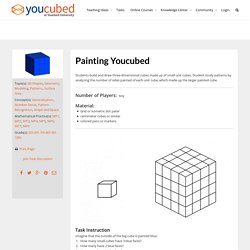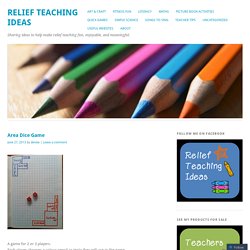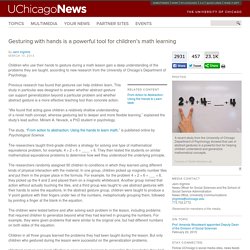

0YCFinal. LNSAttentionFractionsfr. 15 Picture Books That Support Children’s Spatial Skills Development. Having strong spatial skills — the ability to understand and mentally manipulate shapes and figures — has been identified by researchers as characteristic of those who find success in STEM fields and creative pursuits.

Developing those skills can start early through activities and the language that caregivers use with children. Parents can also support young children’s spatial reasoning skills by reading them “spatially challenging picture books,” says Temple University’s Nora Newcombe. These includes books that examine scenes from various angles or perspectives, that include maps and spatial language, or whose illustrations require close attention to decipher their meaning. The power of these books is both in the illustrations themselves and in how parents and educators talk about the pictures with children, says Julie Dillemuth, a spatial cognition geographer. Volume 1 Isometric Dot Paper.pdf. Book+keyhole+2.jpg (JPEG Image, 671 × 720 pixels) Three+boxes+problem.jpg (JPEG Image, 704 × 548 pixels) Hole+punching.jpg (JPEG Image, 1382 × 1600 pixels) - Scaled (62%)
Drafter%27s+puzzle+%28easy%29. Decorated+cube.jpg (JPEG Image, 1125 × 1600 pixels) - Scaled (62%) Painting Youcubed - Generalization, Number Sense, Pattern Recognition, Shape and Space. Students build and draw three-dimensional cubes made up of small unit cubes.

Student study patterns by analyzing the number of sides painted of each unit cube, which made up the larger painted cube. Number of Players: Any Material:Grid or isometric dot patercentimeter cubes or similarcolored pens or markers Task Instruction Imagine that the outside of the big cube is painted blue.How many small cubes have 3 blue faces? Relief Teaching Ideas. A game for 2 or 3 players.

Each player chooses a colour pencil or texta they will use in the game. Players take turns rolling the dice, using the numbers that they rolled to draw the perimeter of a rectangle or square & writing the area in the middle of the shape. Game ends when players run out of room to draw. Winner is the player who has used the largest area/most squares.
Gesturing with hands is a powerful tool for children’s math learning. Children who use their hands to gesture during a math lesson gain a deep understanding of the problems they are taught, according to new research from the University of Chicago’s Department of Psychology.

Previous research has found that gestures can help children learn. This study in particular was designed to answer whether abstract gesture can support generalization beyond a particular problem and whether abstract gesture is a more effective teaching tool than concrete action. “We found that acting gave children a relatively shallow understanding of a novel math concept, whereas gesturing led to deeper and more flexible learning,” explained the study’s lead author, Miriam A.
Novack, a PhD student in psychology. The study, “From action to abstraction: Using the hands to learn math,” is published online by Psychological Science. The researchers taught third-grade children a strategy for solving one type of mathematical equivalence problem, for example, 4 + 2 + 6 = ____ + 6.
Falling+origami+papers.jpg (1334×1600) Falling+origami+papers.jpg (1334×1600) Spatial Abilities - MathWiki. From MathWiki Overview There is a broad range of materials on Spatial Abilities.

Some overall conclusions are that these are not uniform across people; that these are learnable; that these matter in fields like geometry, engineering, biochemistry; there are tests for each of these abilities; young children learn / are born with some of these abilities. These abilities were first identified in the work of Thurstone (see for example) Thurstone, L. A recent description (cited in an article about Air Traffic Controllers) says: spatial abilities "have to do with individuals' abilities in searching the visual field, apprehending the forms, shapes, and positions of objects as visually perceived, forming mental representations of those forms, shapes and positions, and manipulating such representations mentally" Carroll, J.
Here is a review article by Alan Bishop: Spatial Temporal Reasoning: The Importance of Touch. Here at the MIND Research Institute, we often are asked, “What does the ST stand for in ST Math?”

Well, ST Math is a non-language, web-based mathematics program that uses and develops students’ spatial-temporal, or ST, reasoning skills. Spatial-temporal reasoning is the ability to mentally move objects in space and time to solve multi-step problems. It’s what allows us, for instance, to load an assortment of suitcases, boxes and bags in a car trunk without relying exclusively on trial-and-error. Research tells us three important things about ST reasoning. First, it connects to mathematics at all levels, from kindergarten to calculus. Transforming the way students learn in this way has produced remarkable results, but the advent of touch-based tablet technology provides the opportunity to take this visual and kinesthetic interactivity, and the concomitant success, to another level.
Trent Mathematics Education Research Collaborative. Www.pme38.com/wp-content/uploads/2014/05/RF-Sinclair-et-al.pdf. SpatialReasoningFr.pdf. Www.pme38.com/wp-content/uploads/2014/05/RF-Sinclair-et-al.pdf. Wiki.math.yorku.ca/images/7/76/1967_Ontario_Geomtery_ReportPrimary.pdf. Dr. Walter Whiteley - The Brain - LearnTeachLead.caLearnTeachLead.ca. Spatial Reasoning Links - MathWiki.